Topic: Business & Public Policy
Can we stop corporations from hiding their profits overseas?
Covid-19 OSHA complaints by essential workers are down 85%
Institute for Technology and Innovation Foundation panelists defend big tech against antitrust charges
Filling the ranks
A new approach to lending in low- and middle-income countries
VIDEO: Technological leadership and 5G patent portfolios
New paper highlights manipulation in 5G patent licensing
The value of competing 5G technology standards shouldn’t be judged by number of patents alone, according to new research by David Teece.

Whether its mobile phones or autonomous cars or telemedicine, 5G is a game-changer, enabling cellular connections up to 100 times faster than 4G. Unfortunately, not all 5G implementations are alike: 5G technology portfolios are easily manipulated by patent holders, and determining which set of technologies and standards are most viable is not always straightforward.
That’s according to Berkeley Haas Prof. David Teece, who examined the problem of 5G patents in a new article for California Management Review titled, “Technological Leadership and 5G Patent Portfolios: Guiding Strategic Policy and Licensing Decisions.” Teece, the Thomas W. Tusher Professor in Global Business and director of the Tusher Initiative of Intangible Assets, highlights the flaws of the patent licensing system and the use of patent counts as an indicator of a technology’s value.
Patent licensing systems
When 5G developers patent their technology, they work with standard development organizations (SDOs) that in turn work with the 3rd Generation Partnership Project (3GPP) to make sure that the patents are commercially viable and meet the standardized elements for foundational technologies. Once the patent is licensed, 3GPP and these developers gain their profits from patent licensing fees and royalty payments which are determined by the fair, reasonable, and nondiscriminatory (FRAND) criteria.
Teece observed that under this licensing system, policing unlicensed use of patent data is often complex and difficult. That means that while these patents may be protected legally, they may not be protected practically. Moreover, just because a license is available does not mean royalties will be paid: The SDOs that patent-developers work with only provide the FRAND framework, but do not assist in developing an official licensing program. Teece suggests that patent owners must be willing to develop a licensing program that users must sign up for, and courts must be willing to charge patent infringers. These two actions may help prevent unlicensed users from getting away with not paying royalities.
Manipulation of patent counts
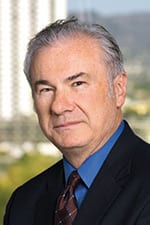
Another problem lies in the way that many companies determine which patents to license. It is tempting to look at the number of patents generated as an indicator of their quality, but quantity does not equal quality. “Patent counts are misleading proxies for technological contribution and leadership,” says Teece. “When well-respected media outlets like the Wall Street Journal and the Financial Times trumpet the patent rankings of companies and countries as proxies for patent value and technological leadership, with minimal if any qualification, it reinforces widespread ignorance about the utility of patent statistics.”
Patent counts can be deceiving and because they are likely biased, he says. For example, one country could hold the most patents, but others may be running the development and deployment services for 5G technology. On another note, the line between patents described as essential and patents simply declared as essential can be ambiguous. This makes patent counting inaccurate and invalid.
More importantly, Teece found that “the patent process is strategically manipulated by some countries and some companies.” For example, as China races to match the success of Western economies, it now owns about 36% of essential 5G patents. They may be partly due to China’s government subsidizing many of the patenting processes, however. Companies also have this same motivation for obtaining license control. In the past, higher patent counts were due to certain companies’ efforts to gain leverage in license negotiations.
With patent counts being easily manipulated, Teece described five key metrics used to understand patent data. Family counts and the number of technical contributions to standard bodies are found to be easy to manipulate and are not meaningful indicators of technological value, he says. On the other hand, forward-citation counts, the number of independent claims, and geographic coverage are difficult to manipulate, but are still not perfect in judging the value of a patent. For example, forward-citation counts do not always reflect commercial significance.
After understanding how patent data is analyzed, Teece lays out methods to for properly assessing leadership in 5G technology. These include performing a patent-by-patent analysis of leading patents, looking at comparable licenses (with running royalty licenses as the most reliable indicator of royalty rates), and utilizing aggregate market-observed choice data to calculate the profit impact of patented technologies.
“Manipulation happens all too often,” Teece says. Though some of the alternative methods to determine technological value may be costly, these steps can help make vast improvements to the future of wireless technology development and use, he argues
Teece’s article was published in the Spring 2021 issue of California Management Review, a journal that publishes academic work that engages scholars and contribute to the practice of management.
In a world let loose, video game makers are ‘doubling down’
Reporter’s notebook
Here’s Why Facebook’s Q1 earnings report is bad news for your business
The world is still in the grip of a major crisis. With the right investment, the United States has a clear opportunity to save millions of lives
Gov. Newsom to help small businesses struggling during pandemic
Black homebuyers today pay an unequal price
How to ensure the ‘endless frontier’ won’t be a bottomless pit
Study finds the cost of partisanship among federal workers
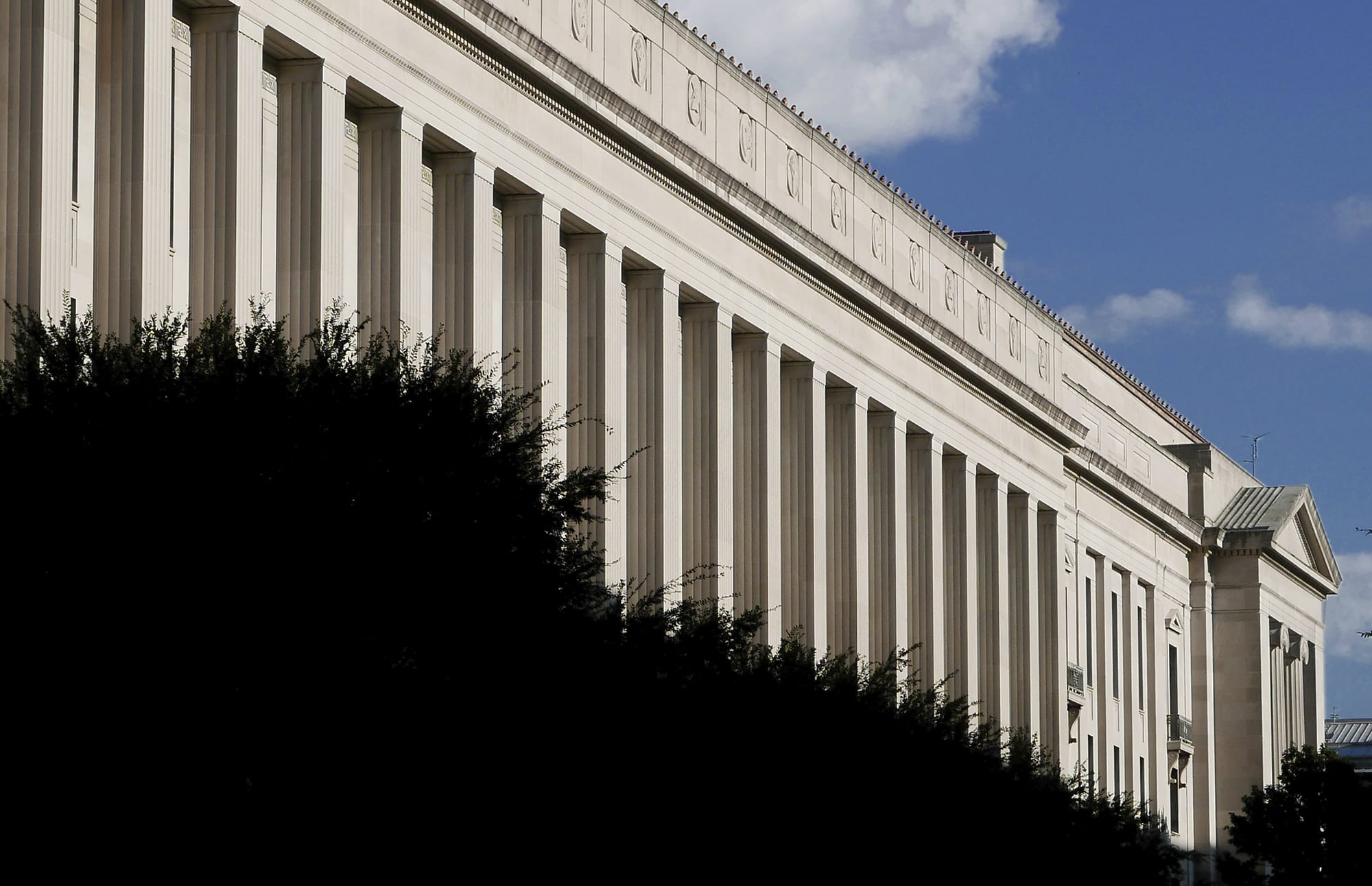
When Donald Trump became president in 2017, federal employees who lean Democratic found themselves working for an administration they didn’t agree with. The same thing happened eight years earlier to Republican bureaucrats when Barack Obama took office.

Most civil servants carry on no matter who occupies the Oval Office, but this inevitable political mismatch does take a toll on productivity: A new study has found that cost overruns in federal contracts increase by about 8% when the worker overseeing them is misaligned with the president’s party.
The study is the first analysis of how partisanship affects hundreds of thousands of government workers at the individual level. Authored by Guo Xu, an assistant professor at Berkeley Haas, with Jorg L. Spenkuch and Edoardo Teso of Northwestern Kellogg, it was made possible by combining personnel records obtained through Freedom of Information Act requests with voter registration records. The researchers also analyzed data from an employee survey to get a sense of workers’ feelings about their jobs.
“We do see evidence for reduced performance due to not being aligned with your leader,” Xu said. “Some people might be quick to think there is some sort of ‘deep state’ slowing things down, but we see the same thing from the Republican side as the Democrat side. Based on our evidence, it looks like misaligned civil servants just become less motivated overall.”
We do see evidence for reduced performance due to not being aligned with your leader
First look at ideology among civil servants
The study, published as a National Bureau of Economic Research working paper, is filled with insights on the federal bureaucracy. From Office of Personnel Management records that included the names, ages, education, occupation, job location, and pay for nearly 3 million federal employees from 1997 to 2019, the researchers were able to match 1.26 million people with their voter registration records. That gave them detailed information on about 45% of federal workers over four presidential administrations: Bill Clinton, George W. Bush, Obama, and Trump.
“This allowed us to look inside the black box of who works for the federal government,” said Xu.
It was no surprise that at the highest levels of government, presidents use their discretionary appointments to align the bureaucracy with the mission of the White House. The analysis found that under a Democratic president, the chances that an appointee is a fellow Democrat increase by over 150%; Republican presidents’ chances of appointing Republican increase over 500% relative to a Democrat.
However, political appointees make up just 0.23% of the federal workforce. For the vast majority of civil servants, the researchers found no apparent partisan cycles. About 2% to 6% of employees leave each year, with no increases around the end of a presidents’ term, and no significant differences between workers from the major parties. (An exception was the Environmental Protection Agency (EPA) after Trump was elected, when departures tripled. Interestingly, it wasn’t just Democrats who were quitting—about the same number of Republicans left during the transition).
Insulated from political cycles
Xu, who has extensively studied the civil service in India and found much more political churn at all levels, says it’s notable that the roughly 2 million federal employees in the U.S. are largely insulated from political cycles.
“We don’t see a mass exodus from the government of people who aren’t aligned with the mission of the president,” he said. “In that aspect, this is exactly the classic idea of what constitutes a well-functioning bureaucracy, where you have career civil servants, continuity and political insulation, so that these experts are given the space to focus on implementing things.”
It was also no surprise that the researchers confirmed that Democrats outnumber Republicans or Independents in the federal workforce, as has long been public perception. Democrats made up about half of the workforce during the 1997-2019 data period (compared with about 41% of the U.S. population). Meanwhile, registered Republicans dropped from 32% to 26% during the period, with an increase in Independents making up the difference. The most heavily Democratic departments are the EPA, Department of Education, and the State Department, where about 70% of employees are registered to the party, while the most conservative departments are Agriculture and Transportation.
Dems have more education, more seniority
The analysis also found that Democrats even more heavily represented in the ranks of upper management jobs, topping out at 63% of senior executives, the level just below presidential appointees. However, this discrepancy is driven largely by the fact that Democrats tend to enter the civil service with higher rates of college and graduate degrees, and tend to stay in government careers longer, relative to Republicans. Even in comparable jobs at the same pay level, Democrats have higher education on average than Republicans.
“These facts are at least suggestive of a higher proclivity for public service among Democrats,” the researchers wrote.
Misalignment and contract overruns
Because federal bureaucrats are largely insulated from political turnover, it’s difficult to measure how partisanship affects their work. Xu and his colleagues looked for workers who had comparable performance measures and outcomes, and found them among procurement officers, who select and monitor federal contracts for services, construction projects, and more. These contracts amount to over 9% of the federal budget.
The researchers were able to match the party affiliation for 7,200 officers who administered over 700,000 contracts across 132 departments and agencies during the period. Comparing among similar contracts, they found an 8% increase in cost overruns among contractors who were registered as Democrats under a Republican president, and vice versa. That was true even when they compared procurement officers within the same department in the same year.
“We didn’t see any change in how people were choosing contractors or the types of contracts, so the decline in performance occurred while they were overseeing the contract,” he said. “These overruns really do seem to be due to a decline in morale, which we corroborate through data from employee surveys.”
In addition to offering the first detailed look at political ideology in the federal workforce, the paper underscores the potential costs of mission misalignment in any organization. “Given that mission-driven organizations are also on the rise in the private sector, misalignment can have a significant impact,” Xu said.
Read the full NBER paper: Ideology and Performance in Public Organizations
Polling Truth
Just how accurate are election polls?
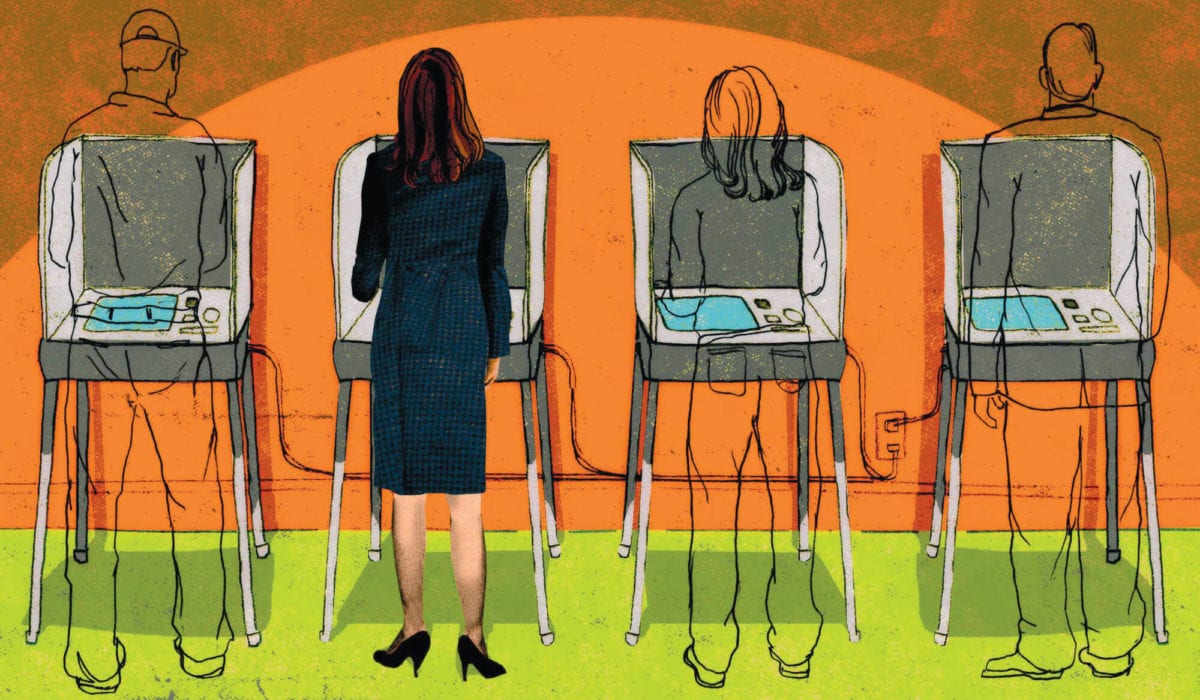
Public confidence in election polls plummeted after Donald Trump beat Hillary Clinton in 2016 despite trailing her in the polls. Even so, horse race-style coverage of the latest polls continues to dominate election news cycles.
A recent Berkeley Haas study suggests that election poll accuracy hasn’t actually declined. Rather, it was never as accurate as pollsters claimed.
Most election polls report a 95% confidence interval. Yet an analysis of polls from 11 election cycles dating back to 2008 found that the outcome lands within the poll’s result just 60% of the time. And that’s for polls just one week before an election—accuracy drops even more further out.
A 95% confidence interval means that if the same sampling procedure were followed 100 times, 95 of those samples would reflect the true voter population. These statistical “sampling errors,” however, do not include errors and unknowns, such as surveying the wrong set of people.
“There are many reasons why an actual outcome and poll could differ, and the way pollsters compute confidence intervals doesn’t take those issues into account,” says Prof. Don Moore, who conducted the analysis with Aditya Kotak, BA 20 (computer science and statistics).
“Perhaps the way we interpret polls as a whole needs to be adjusted to account for this uncertainty,” Kotak says.
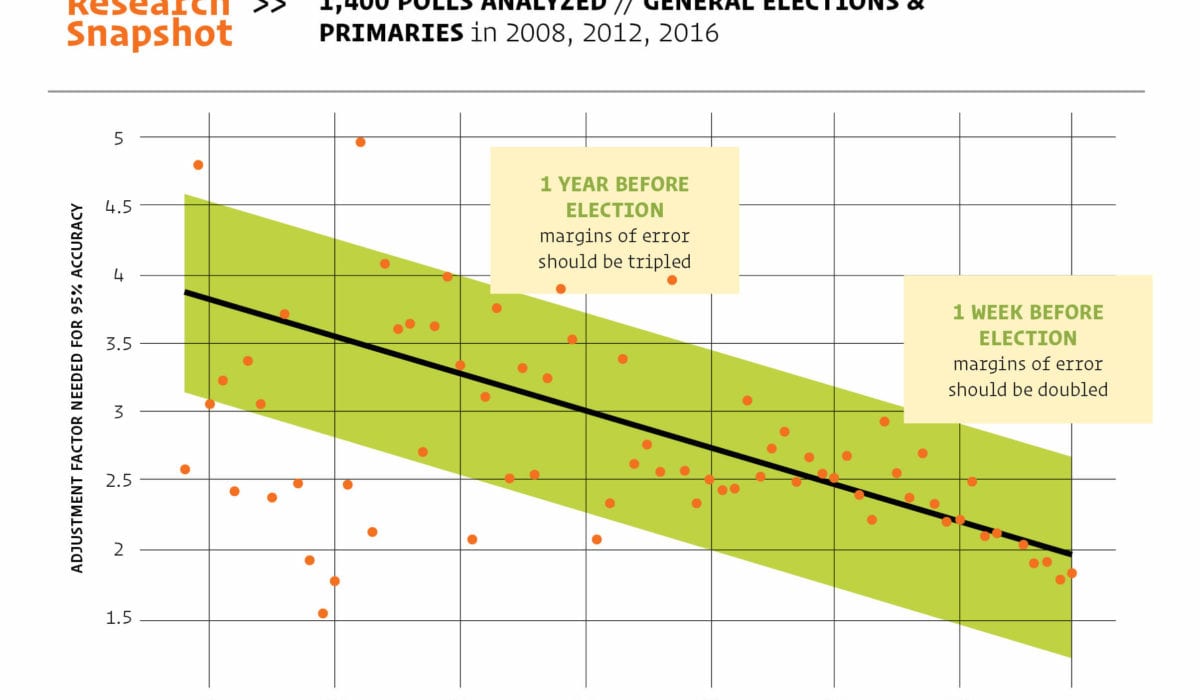
In order to be 95% accurate, pollsters need to greatly increase the margins of error they report.
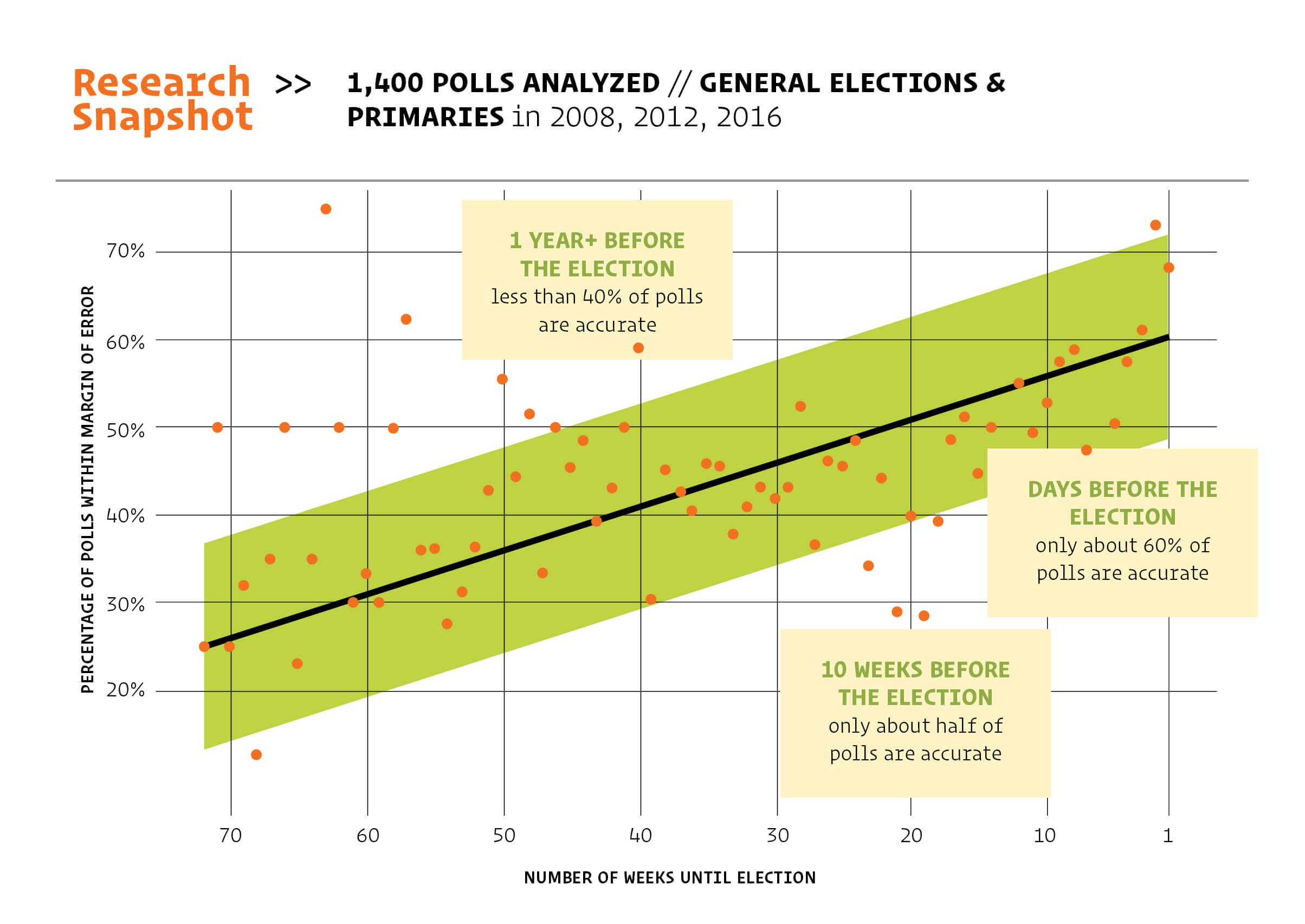
Most polls ask, “If the election were held today,…” yet accuracy declines the further from an election the poll was conducted.
Nilmini Gunaratne Rubin, MBA 99
Co-Founder, Fix the System; Founding Member, Leadership Now Project

Having enjoyed a 20-year career in Washington, D.C., most of it on Capitol Hill, Nilmini Gunaratne Rubin thought she knew how the political system worked—until two years ago. “I got nervous about things happening with the media, racial rhetoric, and voting rights,” she says. “I worried about how fragile our unwritten, cultural norms can be when people don’t want to comply with them.”
So Rubin, whose previous work had been in the foreign policy sphere, pivoted her career toward election integrity and democratic reform in the U.S. She co-founded Fix the System and became a founding member of the Leadership Now Project.
Fix the System is a cross-partisan coalition of grassroots, business, and national organizations, and Rubin helped them develop strategies to promote election integrity, voter rights, and fair redistricting. “We brought Democrats, Republicans, and Independents together on all of the work,” Rubin says, “so we were able to engage some different people.”
The Leadership Now Project, which she joined with other women MBAs, calls on business professionals to strategically invest and participate in democracy reform. Rubin drove engagement efforts. “It’s an important signal to people who might want to push against the rule of law to show that the business community is opposed to that,” she says.
The 2020 election was a stress test for democracy and exposed weaknesses, Rubin says. Going forward, her organizations will work on fixing laws and advancing cultural changes in the name of reform. “We need to pay more attention to the health of our democracy,” she says.
National Treasures
Haas economists manage nation’s finances
Three Berkeley Haas economists are continuing the school’s long tradition of public service in Washington, D.C.: Assoc. Dean and Prof. Catherine Wolfram and Assoc. Prof. Adair Morse have joined Prof. Emeritus Janet Yellen, who serves as secretary of the U.S. Department of the Treasury.
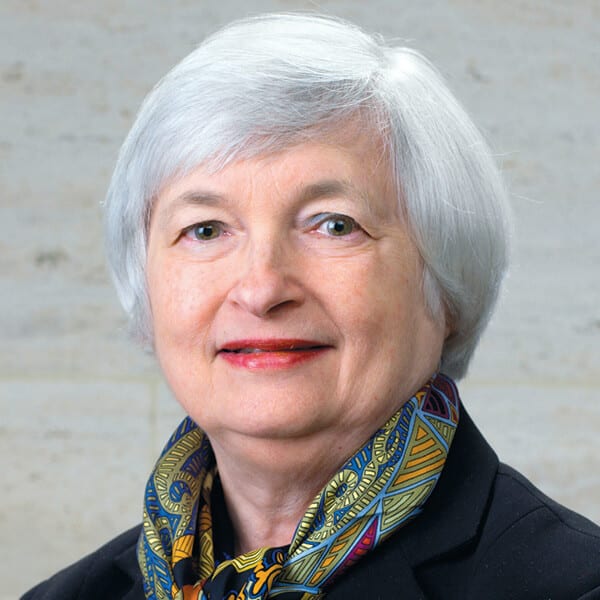
Secretary of the U.S. Department of the Treasury
Yellen, the first woman to lead the Federal Reserve, is now the first woman to serve as treasury secretary. She’s also the first person to have served in the nation’s three top economic roles, since she also chaired the President’s Council of Economic Advisers during the Clinton administration. Haas economist and Distinguished Prof. Laura D’Andrea Tyson was the first woman to chair the Council of Economic Advisers.
Yellen is credited with shepherding the country out of the Great Recession when she led the Fed from 2014 to 2018 and will now serve as President Biden’s lead economic advisor as he confronts the fallout from the coronavirus pandemic. She will also be instrumental in helping Biden reduce income inequality and initiate an economic recovery package focused on manufacturing and clean-energy jobs.
“Economics isn’t just something you find in a textbook,” Yellen wrote on Twitter after being sworn in. “It can be a potent tool to right past wrongs and improve people’s lives.”
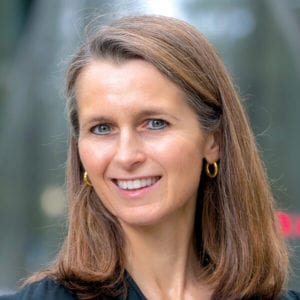
Deputy Assistant Secretary for Climate and Energy Economics
Yellen has also increased the department’s focus on fighting climate change. Wolfram, the Cora Jane Flood Professor of Business Administration, started March 1 in the position of deputy assistant secretary for climate and energy economics in the Office of Economic Policy. She is a world-renowned expert who has published extensively on climate and energy economics and led randomized controlled trials to evaluate energy programs in the U.S., Ghana, and Kenya.
“It’s fantastic that the Biden administration is paying so much attention to climate change,” says Wolfram. “It’s one thing to sit in your office and write about what policy makers should and shouldn’t do, but I’m really excited to be a part of those efforts.”

Deputy Assistant Secretary of Capital Access
Morse, the Soloman P. Lee Chair in Business Ethics and a member of the Haas Finance Group, began in February as deputy assistant secretary of capital access in the Office of Domestic Finance, which develops policies and guidance for Treasury Department activities in the areas of financial institutions, federal debt finance, financial regulation, and capital markets.
Morse had spent much of the pandemic helping small businesses. She and Tyson developed an innovative loan program that uses public capital to attract private lenders and provide low-interest credit to the most vulnerable small businesses. It became the foundation of the state’s California Rebuilding Fund and a program in Berkeley.
“I’m thrilled to have the opportunity to serve in the Biden Administration and to join the team at Treasury, serving the people of this great country,” says Morse.